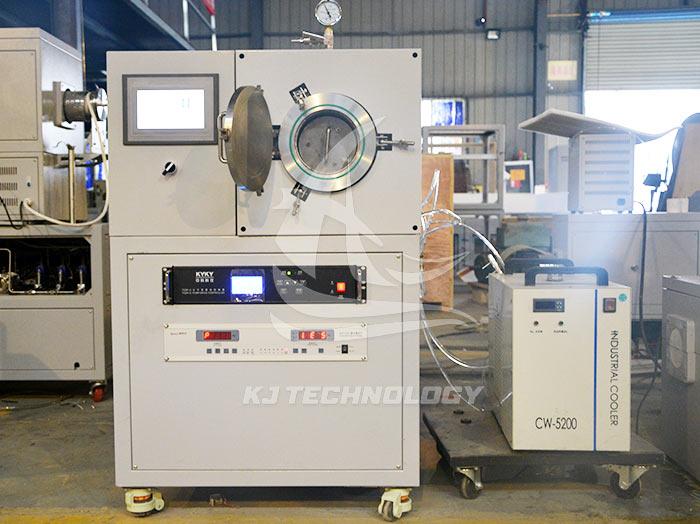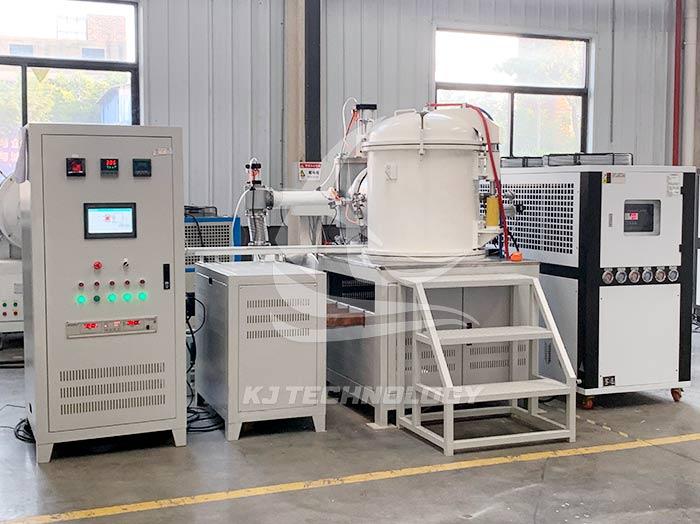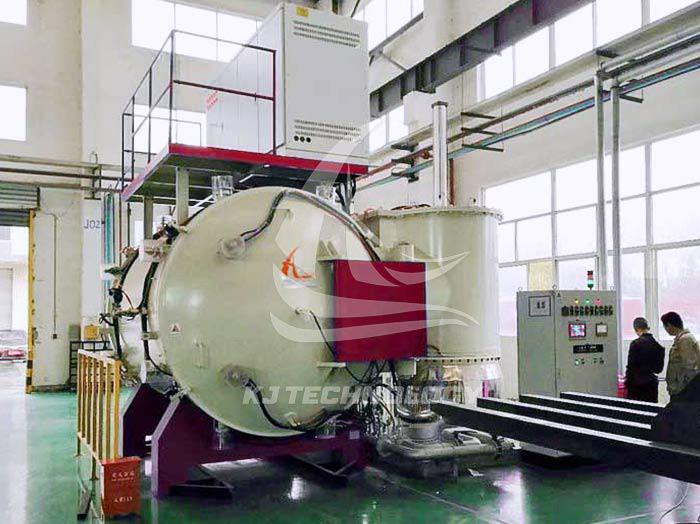Working principle of laboratory powder sintering furnace
 08-08-2025 Author: KJ technology
08-08-2025 Author: KJ technology
The laboratory powder sintering furnace is a core equipment used in the fields of materials science and engineering to prepare high-density and high-performance materials. Its working principle is based on the physical and chemical changes between powder particles at high temperatures. The following is the detailed working principle of the laboratory powder sintering furnace:
1. Basic concepts of sintering
Sintering refers to the process of heating powdered materials (such as metals, ceramics, or composite materials) to a temperature below their melting point at high temperatures, and combining the powder particles into a dense whole through mechanisms such as diffusion, flow, and recrystallization between particles. The purpose of sintering is to eliminate the pores inside the material and improve its properties such as density, strength, and hardness.
2. The core working principle of laboratory powder sintering furnace
a. Heating system: provides a high-temperature environment
Heating method:
Resistance heating: Joule heating is generated by passing electricity through resistance wires (such as iron chromium aluminum, nickel chromium alloy) inside the furnace. It is the most commonly used heating method in laboratories and has the advantages of low cost and simple control.
Temperature control:
Laboratory sintering furnaces are usually equipped with high-precision temperature control systems (such as PID controllers), which can achieve precise temperature setting and stable control (with an error of usually ≤± 1 ℃).
The temperature range is wide, covering from low temperatures (such as 300 ℃ for polymer sintering) to high temperatures (such as 2200 ℃ for carbide ceramic sintering).
b. Atmosphere control system: regulate the sintering environment
Atmosphere type:
Air: Suitable for materials that are insensitive to oxidation, such as certain metal oxide ceramics.
Inert gases (such as nitrogen and argon): prevent materials from oxidizing at high temperatures, commonly used in the sintering of metal based composite materials or active ceramics (such as silicon nitride and silicon carbide).
Vacuum: By evacuating the gas inside the furnace, oxidation can be avoided or degassing reactions can be promoted. It is suitable for sintering high-purity ceramics or metal ceramic composite materials.
Reducing gases (such as hydrogen and carbon monoxide): used for reducing sintering, such as reducing metal oxides to metals.
Atmosphere regulation method:
By accurately controlling the gas flow rate through a mass flow meter, dynamic adjustment of the atmosphere can be achieved.
The vacuum sintering furnace is equipped with a molecular pump or diffusion pump, which can achieve high vacuum degree (such as below 10 ⁻ ³ Pa).
c. Pressure loading system: promotes densification
Atmospheric pressure sintering:
Powder can sinter freely without external pressure and is suitable for most ceramic and metal materials.
Densification mainly relies on diffusion and flow between particles, but may result in lower density due to the difficulty of completely eliminating pores.
Hot pressing sintering (HP):
Applying unidirectional pressure (usually 10-50 MPa) while heating promotes particle rearrangement and plastic flow, significantly increasing density.
Suitable for difficult to sinter materials such as silicon carbide and silicon nitride, or composite materials that require high density.
Hot isostatic pressing (HIP):
Apply isotropic pressure (up to 200 MPa) through inert gas (such as argon) at high temperatures to eliminate internal pores and residual stresses.
Commonly used for post-processing to further improve the density and properties of materials.
d. Dynamics mechanism of sintering process
Particle rearrangement:
In the early stage of sintering, powder particles are adjusted in position through vibration or diffusion, reducing pores and increasing bulk density.
Temperature rise or pressure application can accelerate particle rearrangement.
Neck growth:
The particle contact point forms a neck through mechanisms such as surface diffusion, volume diffusion, or evaporation condensation, increasing the connection strength.
The growth rate of the neck is affected by temperature, time, and material properties.
Pore closure:
As the neck grows, the pores gradually shrink and close, and the material density increases.
In the final stage, isolated pores may form, which need to be eliminated by extending the insulation time or increasing the pressure.
Grain growth:
Grains grow through atomic migration at high temperatures, which may reduce material strength (grain coarsening) or improve toughness (grain refinement).
It is necessary to control the grain size through process optimization (such as adding grain inhibitors).
3. Typical workflow of laboratory powder sintering furnace
charge:
Place the powder sample into a graphite or alumina crucible, avoiding direct contact with the furnace.
For hot pressing sintering, the powder needs to be loaded into a mold and pre pressed into shape.
Vacuum pumping or inflation:
Vacuum to the target pressure according to material requirements, or fill with protective gas to atmospheric or positive pressure.
Heating:
Heat up to the sintering temperature at a set rate to avoid cracking caused by thermal stress.
Keep warm for a certain period of time to promote densification.
Cooling:
Reduce temperature at a controlled rate (such as furnace cooling or forced air cooling) to prevent thermal shock damage.
Some materials require rapid cooling to retain metastable phases or amorphous structures.
Sampling and testing:
Take out the sintered sample and conduct performance tests such as density, hardness, and microstructure.
4. Application scenarios of laboratory powder sintering furnace
Ceramic materials:
Preparation of high-performance ceramics such as alumina, silicon nitride, and silicon carbide for use in fields such as electronics, aerospace, and biomedical applications.
Metallic materials:
Sintered hard alloys (such as WC Co), metal powder metallurgy parts (such as gears, bearings), etc.
compound material:
Prepare composite materials such as metal ceramic, ceramic ceramic, and ceramic polymer to achieve complementary performance.
Functional materials:
Sintered magnetic materials (such as neodymium iron boron), thermoelectric materials, superconducting materials, etc.
5. Precautions
Temperature uniformity:
Ensure uniform temperature distribution inside the furnace to avoid local overheating or undercooking of the sample.
Regularly calibrate the temperature control system and check the aging condition of the heating elements.
Atmosphere purity:
For materials that are sensitive to the atmosphere (such as nitride ceramics), high-purity gas should be used and leaks should be regularly detected.
Security protection:
Wear protective gloves and face shields during high-temperature operations to prevent burns.
Vacuum sintering furnaces need to be equipped with pressure safety valves to prevent explosion risks.
Sample placement:
Avoid direct contact between the sample and the furnace or heating element, and use insulation pads (such as alumina or graphite).
Process optimization:
Determine the optimal sintering temperature, time, and atmosphere parameters through pre experiments to avoid resource waste.








